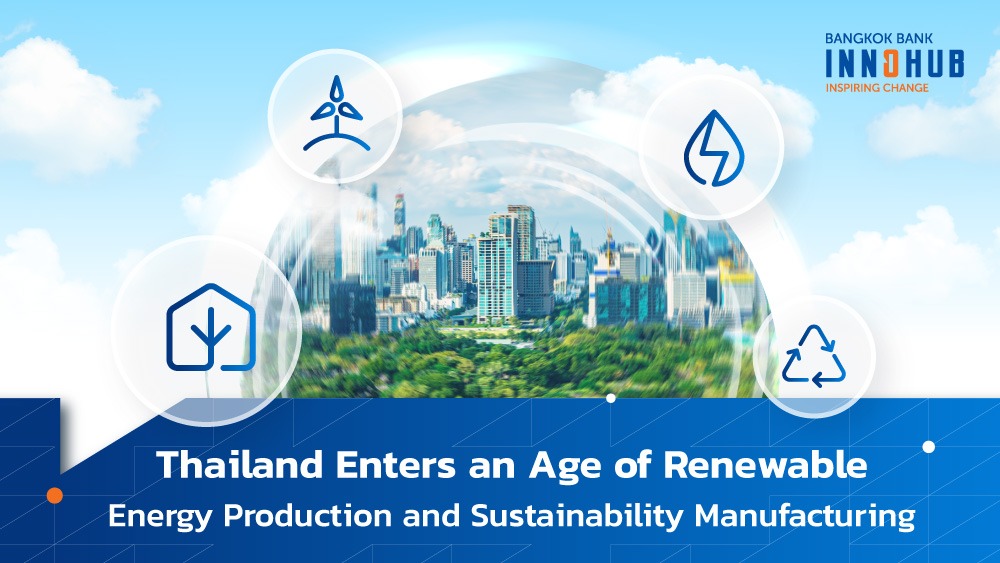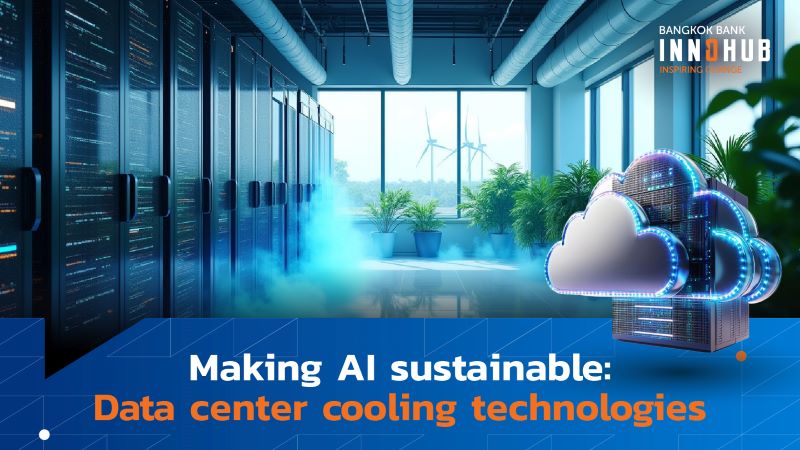According to the International Energy Agency, the global market for key mass-manufactured clean technologies will be worth around USD 650 billion a year by 2030, creating millions of direct and indirect jobs. The rapid investment in sustainable technologies is accelerated by the global energy crisis and increasing pressure from intergovernmental organizations, which have prompted countries to reduce their reliance on fossil fuels.
Historically speaking, most of Thailand’s energy, just like that of many other Southeast Asian countries, has been produced by burning fossil fuels. Furthermore, the Thai economy is heavily reliant on primary raw materials such as aluminum. Under sustainable development goals and the Circular Economy Plan, Thailand is ramping up its investments in sustainable technologies as a means of building resilience against future challenges and reducing its reliance on fossil fuels.
Thailand’s most promising source of renewable energy
Thailand’s renewable energy mix consists of 30% biomass, 25% hydropower, 24% solar power, 13% wind power, and 8% other sources such as waste and geothermal power. Approximately 14.9% of Thailand’s energy is created from renewable sources, though the government aims to increase this total to 30% by 2037. To achieve this goal, much effort must be put into solar power, whose current capacity is 2,633 MW — with plans to reach 14,864 MW by 2037.
Deep within northeastern Thailand, in Ubon Ratchathani province, a reservoir has been transformed into a floating solar farm. With an astonishing network of 144,000 floating solar panels feeding into the same power grid as the Sirindhorn dam, the project is touted as the world’s largest floating hydro-solar farm, capable of generating solar power by day and hydropower by night.
In all, the Thai government hopes to produce 2,725 megawatts of power from hydro-solar farms by 2037, as part of its plan to reduce up to 47,000 metric tons of carbon emissions per year. Should the government decide to implement hydro-solar projects for all 20 major dams nationwide, the amount of renewable energy that Thailand could produce from these generators alone would be gargantuan.
The country’s move toward efficient recycling and sustainable packaging
Thailand’s packaging sector continues to grow. Currently, the nation is highly dependent on the import of primary aluminum, a raw material that it cannot produce alone. This dependency has given rise to a number of sustainability initiatives within the country that place an emphasis on aluminum package recycling and resource management in order to ensure that all these are efficiently recycled and reused.
Many Thai F&B corporations, such as Thai Beverage Can, Siam Can, and Carabao Group, have selected suppliers that use a high percentage of recycled aluminum within their aluminum coils. They also develop packaging designs that are lightweight. Given that lightweighting helps to reduce the consumption of recycled resources while also lowering the overall carbon footprint across the supply chain, this type of effort signifies Thailand’s entry into a new era of efficient recycling.
Thailand’s plastic recycling biochemical industry
Most of Thailand’s past biochemical projects focused on refining biofuels, especially biodiesel. It was only recently that the Corsair Group, a company based in the Netherlands and Thailand, came up with viable solutions to combat plastic waste, air pollution, and water pollution through innovative pyrolysis technologies, which could potentially revolutionize Thailand’s plastic recycling industry for the better.
It is widely known that plastic products that are used in our daily lives are made from oil. Using pyrolysis, a thermal decomposition technique that does not discriminate between forms of plastic, heat is applied to turn plastic waste into smoke and gas — a process in which no toxic fumes are released into the atmosphere. Next, flammable gasses are used as a transforming agent to turn plastic waste into a reusable liquid known as “advanced bio-oil”.
Upon filtration, advanced bio-oils can be used as ingredients or binding agents to create highly valuable chemicals. Furthermore, given their low sulfur composition, they can also be used as raw materials for the manufacturing of a more environmentally friendly form of fuel. The main objective of pyrolysis technology is to create a lifecycle for plastic products where they are recycled, transformed, and re-used, instead of polluting the environment — an objective that coincides with Thailand’s circular economy plan.
Job creation in Thailand’s renewable energy sector
According to a report by the United Nations International Labour Organization, the world-wide solar energy sector provided approximately 4.3 million jobs in 2021. In 2016, Thailand’s direct employment rate for the renewable energy industry was approximately 17,758 jobs — far more than its coal energy industry, which provided just 1,950 jobs. Should Thailand’s Circular Economy Plan progress as planned, with solar and biomass power at the forefront, renewable energy could generate more than 70,000 jobs in Thailand over the next few decades.
In addition to direct employment gains, Thailand’s renewable energy industry also has great potential to create indirect jobs. Maintenance workers, for example, will be required to keep the solar panels clean and effective, which could result in a large number of jobs being created for other purposes such as logistics and R&D.
The challenges ahead
The progression towards renewable energy production and sustainable manufacturing in Thailand is not without its challenges. There is still a need to develop the necessary infrastructure to support the growth of the renewable energy sector and to educate the public about the benefits of these new technologies. Additionally, there is a need to ensure that the transition to sustainable energy production and manufacturing is carried out responsibly, taking into account the potential impact on local communities and the environment.
Transboundary water disputes along the Mekong River are a significant example of how little has been done to address the impacts of hydropower projects on the livelihoods of local fishery communities and the upstream migration of fish. This problem also applies to the implementation of hydro-solar farms, where fishermen have made it known that the presence of large floating solar panels has made it difficult for them to consistently catch fish, obstructing their main source of subsistence.
Although there are other concerns related to high maintenance costs and the development of an effective nationwide grid to interlink all renewable energy sources, the main challenge for the Thai government is to seek a middle ground in implementing renewable energy projects while also proactively addressing the economic concerns of their local communities. Moreover, given the regular occurrence of floods, more has to be done to assure that Thailand has the infrastructure necessary to support renewable energy projects throughout environmental disasters that constantly place solar projects under threat.
In regards to recycling, Thai communities have shown great interest in key initiatives, with local governments doing their part to encourage the responsible disposal of waste. However, there are still sporadic instances in which locals tend to resort to more convenient traditions as opposed to new, sustainable practices; what this means is that the burning of plastic waste still runs rampant within the countryside, in addition to the frequent jettisoning of plastic waste into river streams and farmlands. In order to make the most of sustainable technologies, the Thai government must look to develop the infrastructure necessary to gather and process waste throughout the nation while also actively combating the seasonal burning of plastic and agricultural waste among locals.
Looking into the future
Achieving renewable energy production and sustainable manufacturing in Thailand is not without challenges, but these are necessary goals for securing a future that is resource efficient and not reliant on fossil fuels. Over the long term, renewable energy helps greatly at both the local and national levels, while also being environmentally friendly and good for business.
Thailand has already shown leadership in renewable energy, within the ASEAN community. If the country actively pursues its goals under the UN Sustainable Development and Circular Economy Plans, it will generate both the credibility and knowledge needed to drive sustainable development across Southeast Asia.




